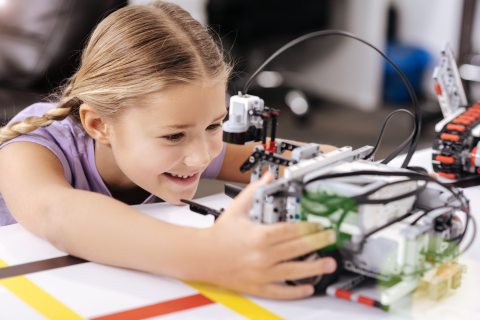What Are Robotic Systems and How Do They Work

Robotic systems are technological devices designed to automate repetitive tasks, improve efficiency, and increase productivity. They are typically composed of a combination of hardware and software that work together to carry out specific functions. These systems have become increasingly popular in various industries, from manufacturing to healthcare. In this article, we will discuss what robotic systems are, how they work, and their applications in different sectors.
The Components of Robotic Systems
Robotic systems consist of three essential components: the mechanical body, the control system, and the software. The mechanical body, also known as the hardware, comprises the physical parts of the system that carry out the tasks. The control system is responsible for monitoring and controlling the actions of the hardware. It includes sensors, actuators, and communication devices. The software, on the other hand, provides the instructions that guide the system’s behavior.
Applications of Robotic Systems
Robotic systems have a broad range of applications, from manufacturing to healthcare. In Huntsville, Alabama, many companies use robotic systems to improve their productivity and efficiency. Industrial robotic arms, for example, are commonly used in manufacturing to assemble products, weld, or handle materials. These robotic arms can be programmed to perform precise movements, making them ideal for tasks that require high accuracy and consistency.
In healthcare, robotic systems are used in surgical procedures to improve the precision and safety of operations. For instance, a surgeon can use a robotic arm to perform minimally invasive surgery, reducing the risk of complications and speeding up the recovery process. Additionally, robotic systems are used in the transportation industry to automate tasks such as packing and sorting of goods.
How Robotic Systems Work
Robotic systems work by following a set of instructions that are programmed into their software. The software provides the system with the necessary information to carry out specific tasks. The control system, which includes sensors, actuators, and communication devices, monitors the system’s environment and sends signals to the hardware to perform the required actions.
The software used in robotic systems is typically written in programming languages such as Python or C++. It contains a set of algorithms that guide the system’s behavior. These algorithms can be adjusted to suit different requirements, making robotic systems highly customizable.
Benefits of Robotic Systems
Robotic systems offer numerous benefits to businesses and industries. They improve productivity, reduce labor costs, and increase efficiency. Robotic systems can perform repetitive tasks with high precision and accuracy, leading to improved product quality. Additionally, robotic systems can operate around the clock, leading to increased output and faster production times.
In Huntsville, Alabama, many industries have benefited from the use of robotic systems. The industrial robot Huntsville, Alabama, has become a common sight in many manufacturing plants. The use of robotic systems has enabled these plants to produce high-quality products at a faster rate and reduced labor costs.
Challenges of Implementing Robotic Systems
Despite the numerous benefits that robotic systems offer, their implementation comes with its challenges. One of the primary challenges is the high initial cost of acquisition and installation. Additionally, robotic systems require specialized skills to operate and maintain, leading to additional training costs. Another challenge is the limited adaptability of robotic systems. They are designed to perform specific tasks, and any change in the task requirements may require significant reprogramming.
Conclusion
Robotic systems have become increasingly popular in various industries due to their ability to automate tasks, improve efficiency, and increase productivity. These systems consist of three essential components: the mechanical body, the control system, and the software. They offer numerous benefits to businesses and industries, such as improved productivity, reduced labor costs, and increased efficiency. However, their implementation comes with its challenges, such as high initial costs and limited adaptability. In Huntsville, Alabama, many industries have benefited from the use of robotic systems, particularly in manufacturing and healthcare. The industrial robotic arm has become a common sight in manufacturing plants, while robotic surgery has become increasingly popular in healthcare.




